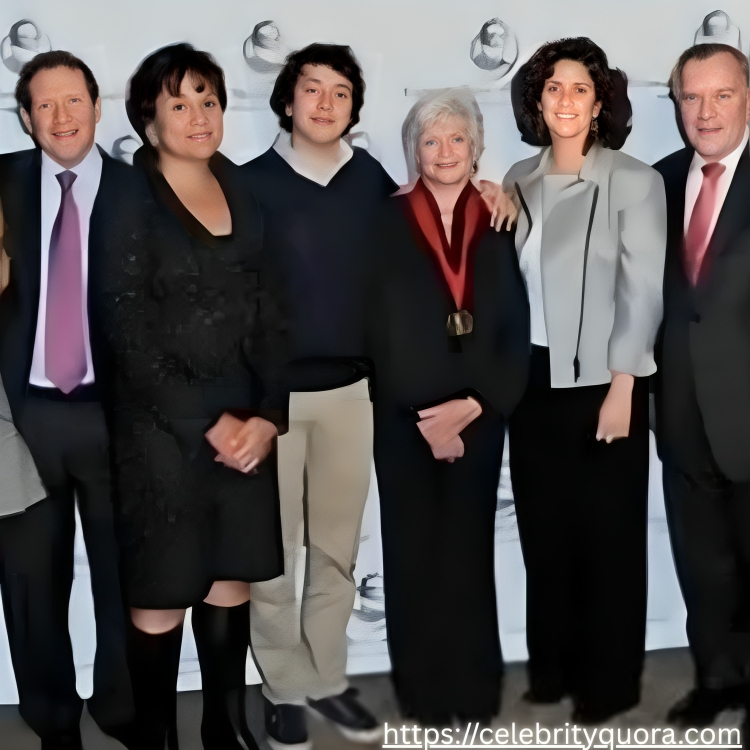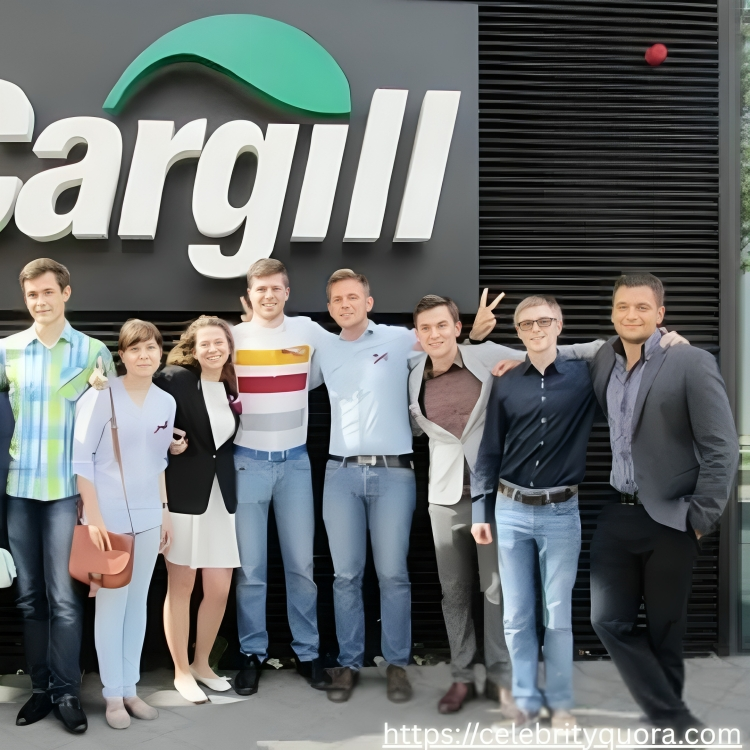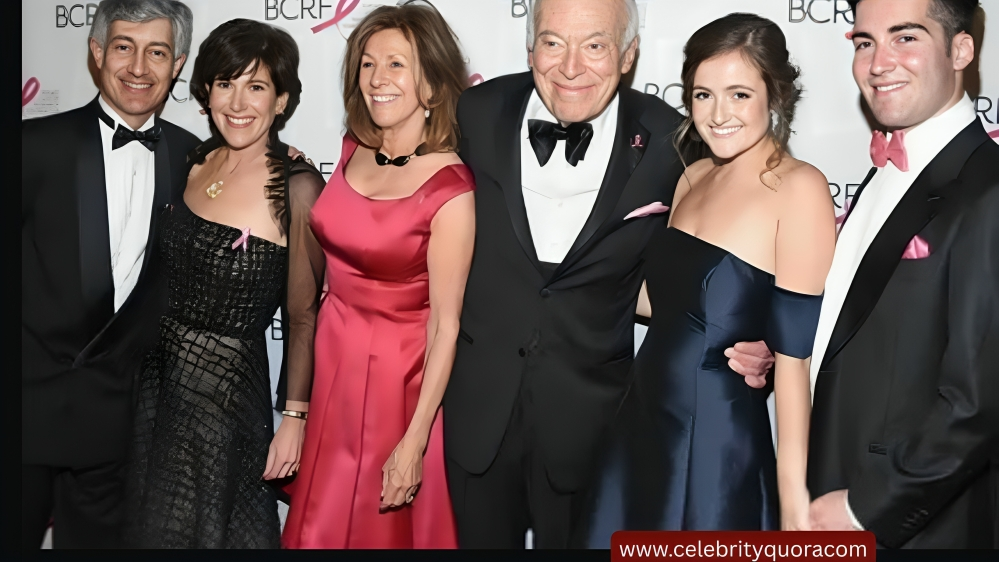The Cargill family stands as one of America’s most influential and wealthiest dynasties. As the majority owners of Cargill Inc, the largest privately held company in the United States, this family has quietly shaped the world of global agriculture, food production, and commodities trading for over 150 years.
Despite their massive fortune, the Cargills and their extended MacMillan family relatives remain intensely private. This article explores their estimated net worth in 2025, family legacy, Cargill company history, and much more.
Cargill Family Net Worth in 2025
As of 2025, the Cargill family’s net worth is estimated to be $51.6 billion.
This wealth is shared among approximately 23 family members, making them one of the richest families in the world.
Net Worth Table: Cargill-MacMillan Family (2025 Estimates)
| Family Member | Estimated Net Worth (USD) | Notable Role |
|---|---|---|
| Gwendolyn Sontheim Meyer | $4.8 billion | Equestrian, Philanthropist |
| Austen Cargill II | $4.5 billion | Former Board Member, Private Investor |
| James R. Cargill II | $4.5 billion | Philanthropist, Investor |
| Descendants (20+ members) | $37.8 billion (combined) | Shareholders, Trustees, Board Observers |
Their wealth stems from ownership stakes in Cargill Inc, which in 2025 is valued at approximately $140 billion in annual revenue.
See Also : David Rocco Net Worth in 2025 , Cooking Shows and Career
The Quiet Billionaire Dynasty
Unlike tech moguls or celebrity heirs, the Cargill-MacMillan clan prefers to operate behind the scenes. Their wealth is tied closely to Cargill Inc, a global agribusiness and food corporation founded in 1865. Though you won’t find many of them flaunting their lives on Instagram, their influence reaches across continents, touching everything from grain storage to meat production.
“The Cargills don’t seek headlines. They create food systems that feed the world.” Agribusiness Insider
- For similar amazing content about celebrities wealth, visit Celebs Premium
The Origins: William Wallace Cargill’s Vision
The Cargill story began in 1865, when William Wallace Cargill started a grain storage business in Conover, Iowa. It was a single grain warehouse, but the idea behind it providing infrastructure for storing and moving agricultural commodities laid the foundation for a global empire.

Key Milestones:
- 1865: Cargill opens first grain storage facility.
- 1900s: Expansion into commodities trading and international grain markets.
- 1930s: The MacMillan family joins via marriage, forming the MacMillan dynasty.
- 1950s-70s: Rapid growth into food processing, meat production, and export markets.
The Cargill-MacMillan Family Tree: A Legacy of Leadership
The Cargill family merged with the MacMillan family through marriage, forming a deeply intertwined dynasty that continues to manage Cargill Inc’s fate through family governance models.
Prominent Members:
- Whitney MacMillan – Last family CEO, led Cargill from 1976 to 1995.
- Margaret Anne Cargill – Noted philanthropist, left $6 billion to charitable causes.
- Gwendolyn Sontheim Meyer – Heiress and noted horse breeder.
These dynastic stewards remain active through foundations, investment trusts, and ownership governance boards.
Cargill Inc Today: A Global Agribusiness Powerhouse
Cargill Inc is no ordinary food corporation. It operates in 70+ countries, employs over 160,000 people, and is involved in nearly every stage of the global agriculture value chain.
Business Overview:
- Annual Revenue: $140 billion (2025)
- Employees: 160,000+
- Presence: 70+ countries
Core Business Areas:
- Agricultural supply chain
- Food production (meat, oilseeds, sweeteners)
- Commodities trading (grain, cocoa, cotton, energy)
- Financial services in the futures market
“Cargill is the connective tissue of the global food system.”
See Also : Eric Weinstein Net Worth 2025 – Family AND Career
Wealth Distribution: 23 Members, 88% Ownership
Unlike public corporations, Cargill Inc is a closely held company. The Cargill and MacMillan families collectively own 88% of the company.
Private Ownership Model:
- Family Shareholders: 23
- Public Investors: None
- Board Involvement: Family-appointed seats
This private ownership structure enables long-term strategic decisions, free from the pressure of quarterly earnings.

Notable Family Members: Profiles of Influence
Gwendolyn Sontheim Meyer
- Net Worth: $4.8 billion
- Occupation: Equestrian, philanthropist
- Influence: Manages Sontheim Foundation, active in horse breeding circles.
Austen Cargill II
- Net Worth: $4.5 billion
- Role: Former Board Member, biotech investor
- Known for: Backing start-ups in the agriculture and life sciences sectors.
James R. Cargill II
- Net Worth: $4.5 billion
- Philanthropic Focus: Conservation, education, and medical research
These MacMillan heirs and family stewards manage their assets through trusts and foundations.
The Last Family CEO: Whitney MacMillan’s Tenure
Whitney MacMillan, great-grandson of the founder, served as CEO from 1976 to 1995. Under his leadership, Cargill Inc expanded its global reach and cemented its dominance in commodities trading and food production.
Legacy Highlights:
- Doubled global operations
- Pioneered entry into emerging markets
- Transitioned leadership to professional executives in the 1990s
His era marked the end of family leadership in daily operations but reinforced the importance of family governance at the board level.
Philanthropy: Margaret Anne Cargill’s Enduring Legacy
Margaret Anne Cargill, who passed away in 2006, left behind a lasting legacy through the Margaret A. Cargill Philanthropies, which today manages over $9 billion in assets.
Focus Areas:
- Disaster relief
- Native American culture
- Environmental conservation
- Arts and education
Her approach to low-profile giving mirrors the family’s broader philosophy of impact without publicity.
See Also : Andrew Wilkinson Net Worth in 2025 – his Family AND Career
Family Governance: Balancing Privacy and Control
Cargill Inc’s board includes family representatives alongside outside executives. The family uses a governance model that includes a family council, annual retreats, and structured succession plans.
Governance Structure:
- Family Council: Coordinates vision and values
- Board Structure: Family + independent directors
- Trusts & Entities: Used to manage shares
This structure has helped maintain unity and generational control across five generations.
Lifestyle and Residences: Living Beyond the Spotlight
Unlike other billionaires, the Cargills and MacMillans live relatively quiet lives. They avoid media and public events, preferring seclusion and simplicity.
Known Residences:
- Montana ranches (Austen Cargill II)
- California estates (Gwendolyn Sontheim Meyer)
- Wisconsin lakeside homes (James Cargill II)
No flashy yachts, no socialite parties just the quiet lives of dynastic owners.
See Also : Tom Bilyeu Net Worth Family and Career
Social Media Presence: The Digital Footprint
Despite their wealth, most family members have minimal or no social media presence. This is in stark contrast to tech billionaires or celebrity heirs.
Observations:
- No verified Instagram or Twitter accounts
- Foundation websites often the only online presence
- Preference for anonymity over influence
This digital invisibility is a deliberate strategy to protect their privacy and shield family affairs from public scrutiny.

Challenges and Controversies: Navigating Public Scrutiny
Cargill Inc has faced criticism over the years related to deforestation, labor practices, and environmental sustainability.
Key Issues:
- Allegations of illegal deforestation in Brazil
- Concerns over factory farming and animal welfare
- Worker safety and rights in international facilities
To its credit, the company has launched several initiatives focused on sustainability, supply chain transparency, and ethical sourcing.
Future Outlook: Succession and Sustainability
The Cargill family has transitioned from direct leadership to strategic oversight. Younger family members are groomed through education, board training, and philanthropy.
What’s Next:
- Greater focus on climate-smart agriculture
- Expansion into plant-based proteins and biotech
- Continuing the balance of private ownership with global influence
By maintaining tight control and investing in innovation, the Cargill-MacMillan dynasty is poised to remain a dominant force in international farming.
Conclusion: The Enduring Influence of the Cargill Family
The Cargill family and MacMillan dynasty exemplify what it means to be dynastic stewards of a global agribusiness. With deep roots in grain storage and a legacy of family governance, they continue to shape the agriculture industry, influence global food systems, and control one of the largest private companies on Earth.

Alok Dimitry is a pop culture expert with a keen eye for celebrity trends and behind-the-scenes stories. With a background in media and communications, he brings sharp analysis and vibrant storytelling to Celebrity Quora. Alok’s passion for the entertainment industry fuels his commitment to delivering fresh, engaging, and reliable content, making him a trusted voice for readers who crave the latest and most intriguing celebrity updates






